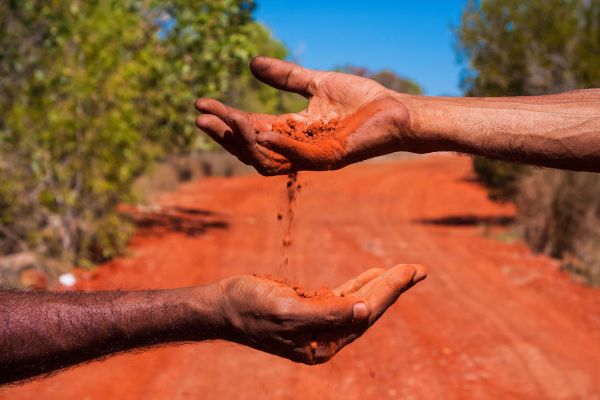Acknowledgement
The Geographical Names Board acknowledges the Traditional Custodians of the lands where we work and the places in which we live. We pay respect to Ancestors and Elders past and present. We recognise the unique cultural and spiritual relationship and celebrate the contributions of First Nations peoples to Australia.
Image: ‘Connecting Communities’ original artwork by Alison Williams.

Two names, one place
When a feature already has a non-Aboriginal name, we can recognise the traditional Aboriginal name by assigning it as a dual name.
It means a feature can have 2 official names that are equal in status, which can be used individually or combined, like this:
- Wambuul
- Macquarie River
- Wambuul / Macquarie River, or
- Macquarie River / Wambuul.
Dual naming does not apply to towns, roads, localities or other administrative areas such as reserves or state forests.

Dual name decision-making
Dual naming is a community driven process and requires meaningful consultation with Local Aboriginal Land Councils, Traditional Custodians and Aboriginal communities local to the feature.
Language connects Aboriginal people to each other and to their land. The right to decide the use of Aboriginal names rests with the Aboriginal people whose language or place names are being proposed.
You'll need to undertake consultation with Aboriginal peoples before proposing a dual name. This process ensures the name reflects First Peoples' culture, traditions and stories and is supported by written or oral tradition.
For more information, visit Aboriginal place naming.

How to propose a dual name
If you're a member of the public or a government agency who wants to propose an Aboriginal place name to the GNB, we need you to provide evidence of support from the local Aboriginal community. The Board can then consider your proposal.
For more information, visit How places are named.
Image: Gaanha bula Mountain, Mount Canobolas State Conservation Area
Credit: Simone Cottrell/DCCEEW
